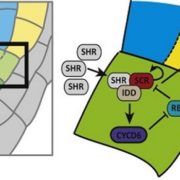
Review: Uncovering gene regulatory networks controlling plant cell differentiation ($)
Plant Science Research Weekly, Research, Research Blog0 Comments
/
The transparency and simplicity of the Arabidopsis root apex has made it an excellent model through which to understand the processes that lead from undifferentiated meristem cells to mature root tissues. Drapek et al. review the gene regulatory networks (GRNs) that underlie the development of the endodermis…
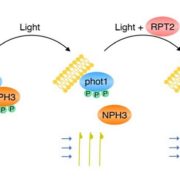
Update: Shining light on the function of NPH3/RPT2-like proteins in phototropin signalling
Plant Physiology, Plant Physiology: Updates, Plant Science Research Weekly, ResearchBlue light regulates diverse functions including phototropism and chloroplast movements. Christie et al. summarize recent updates in understanding the signalling pathway between light perception by phototropins and downstream responses. They describe the central roles for the 33 members (in Arabidopsis)…
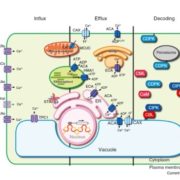
Review: The evolution of calcium-based signalling in plants
Plant Science Research Weekly, Research BlogCalcium signalling is a ubiquitous process in plants and other organisms. Transporters at the plasma and vacuolar (tonoplast) membranes control entry and exit of calcium ion into the cytoplasm, and it is the cytoplasmic calcium level ([Ca2+]cyt) that affects cellular responses, as calcium-binding proteins…

What We're Reading: July 21
Research, Research BlogReview: The evolution of calcium-based signalling in plants
Calcium signalling is a ubiquitous process in plants and other organisms. Transporters at the plasma and vacuolar (tonoplast) membranes control entry and exit of calcium ion into the cytoplasm, and it is the cytoplasmic calcium level ([Ca2+]cyt)…

Report: Undergraduate research experiences for STEM students: Successes, challenges, and opportunities
Plant Science Research WeeklyA new report (free to download) from the National Academies, edited by Gentile et al., provides insights into how undergraduate research experiences (UREs) enhance and support undergraduate education, whether they are faculty-mentored lab or field-based research or research embedded in a course. This…

Special Issue: Plant epigenomics
Plant Science Research WeeklyThe current issue of Genome Biology features a collection of review and research articles on the topic of plant epigenomics, with an overview editorial by Köhler and Springer. This collection "highlights advances in our understanding of the functions of epigenetic modifications, and the application…
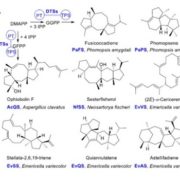
Convergent evolution of sesterterpene biosynthetic repertoire in the Brassicaceae
Plant Science Research WeeklySesterterpenes are a family of natural products; some (derived from corals and fungi) have been shown to have antitumor, antimicrobial and antiinflamatrory activities. Huang et al. used genome mining to identify sesterterpene biosynthetic genes in the Brassicaceae. The first committed step is carried…

Synthesis of the anti-HIV compound daurichromenic 1 acid in Rhododendron dauricum
Plant Science Research WeeklyDaurichromenic 1 acid (DCA) is a meroterpenoid with anti-HIV properties that is produced in young leaves of Rhododendron dauicum. In this study, Iijimi et al. identified a DCA synthase gene. Starting with their previous observations that this enzyme is a stereoselective meroterpenoid oxidocyclase, similar…
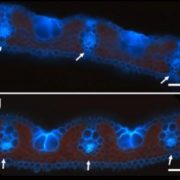
Expression of Kranz-anatomy candidate genes from maize in rice
Plant Science Research WeeklyMost plants that use the more efficient C4 form of photosynthesis also exhibit Kranz anatomy, in which the PEPC and Rubisco carboxylases reside in distinct cells. Key genes that control the development of Kranz anatomy have been hard to find. In this report, Wang et al. analysed the effects of constitutively…

